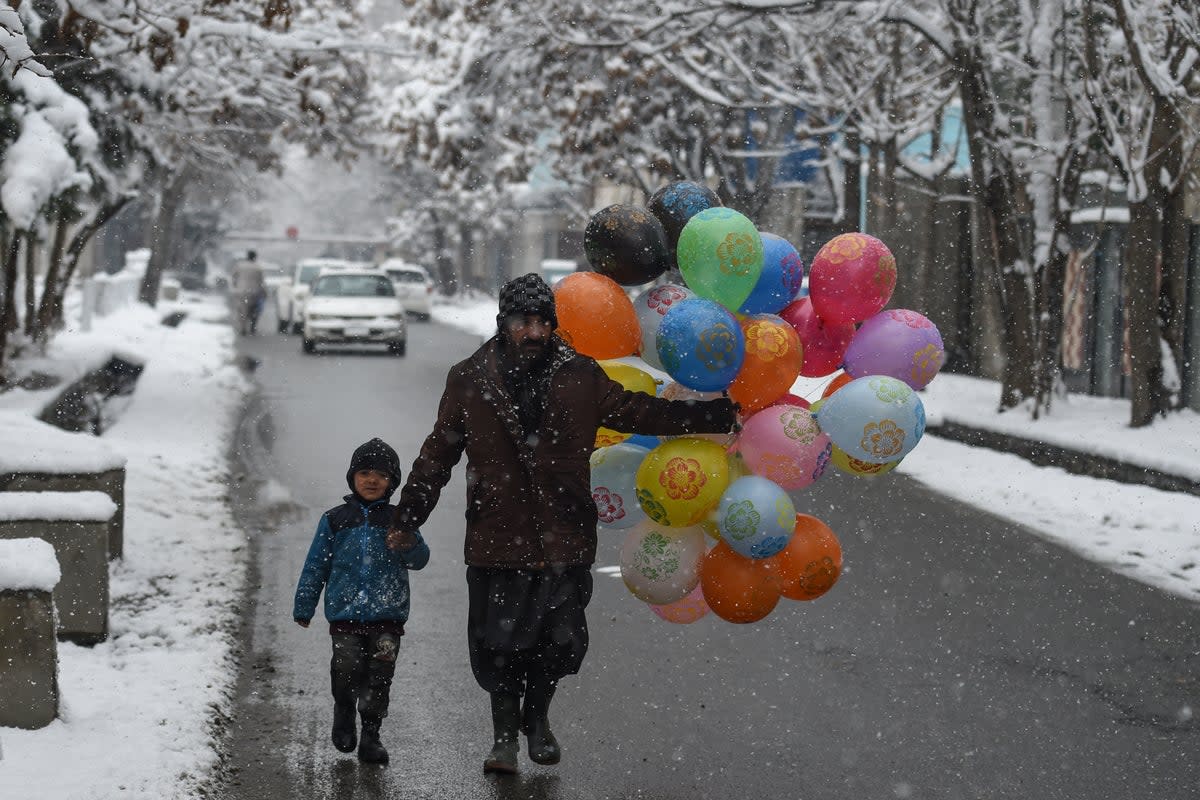Deepening drought leaving 8 million Afghan children without enough to eat

A severe lack of snow and warmer-than-average winter recorded in Afghanistan this year could exacerbate the country’s already dire drought conditions, five international rights groups said.
Afghanistan is already in its third year of drought, and humanitarian groups are warning that another year could push the conflict-stricken country to the brink.
Between October to mid-January, the peak winter period, Afghanistan has only received 45 to 60 per cent of the average precipitation compared to previous years.
Capital Kabul didn’t see its first heavy snowfall of the season until Saturday.
Half of the usual snow in the season means water shortages will persist, raising concerns that drought conditions will worsen.
Vulnerable children and families relying on subsistence agriculture are expected to be severely impacted without increased rain and snow, the warning issued by NGOs, including Save The Children, Islamic Relief and Action Against Hunger, said.
International estimates indicate that 7.8 million children in Afghanistan will enter 2024 without enough food. More crop failures due to lack of water will exacerbate poverty in the country which has suffered through four decades of conflict, repeated disasters and an economic downturn.
Since the Taliban took over, the aid Afghanistan received has been disrupted. If drought conditions persist, there is a significant risk of crop failures, exacerbating poverty as families abandon dry and barren villages.
Villagers say the agricultural production has already been low in recent years.
“The situation was good in the past. There was agricultural production in this village, and there was work for daily labours,” Razia, a 38-year-old mother of four, said.
But now she says her husband doesn’t get frequent work.
“The day my husband finds work, he earns 250-300 Afghanis (£2-3), but he barely finds work for one or two days a week,” she says.
Afghanistan is one of the most vulnerable countries to the impact of the climate crisis. Over 80 per cent of its population depends on agriculture for livelihood.
The lack of snow in the Himalayas is being seen as a result of record breaking global heat since the start of 2023.
Temperatures have largely remained higher than average in the entire Himalayan region of South Asia, including India, Pakistan and Afghanistan. All three countries have seen below average snowfall this year, with India’s Kashmir region remaining snowless until mid-January.


